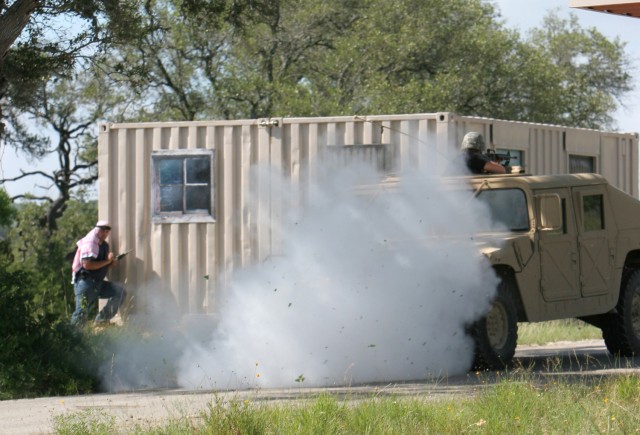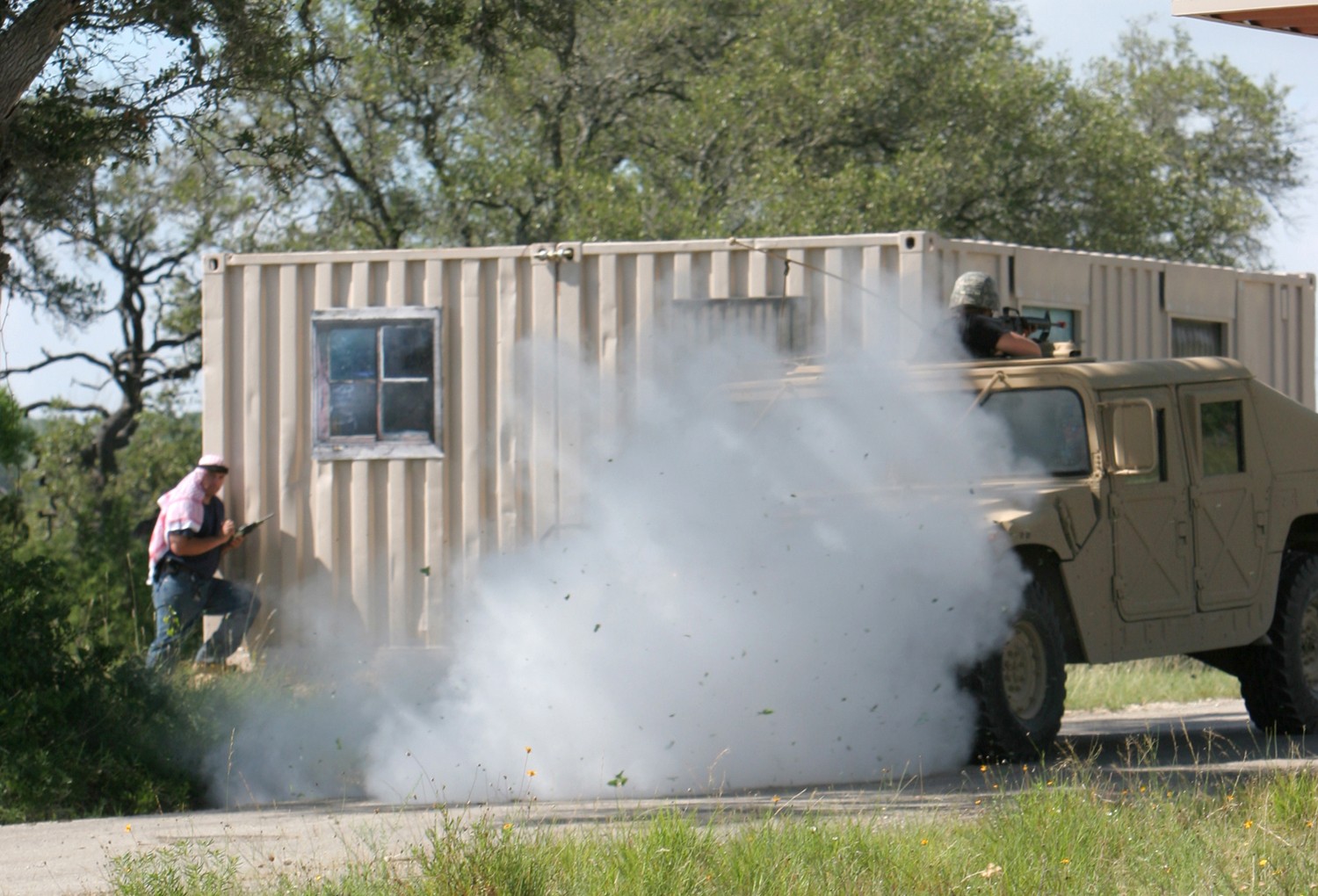CAMP BULLIS, Texas -- Soldiers from the 470th Military Intelligence Brigade experienced a new dimension in convoy training with real explosives simulating improvised explosive device attacks earlier this summer at Camp Bullis.
Members of the brigade's 717th MI Battalion were training to serve on Low Level Voice Intercept teams, mastering the operation of complex equipment; but during the last phase of training, their focus shifted to reacting to IED attacks.
According to Congressional Research Service Reports, there were 7,228 IED attacks in Afghanistan in 2009, a 120 percent increase over 2008 and a record for the war.
Of the 512 foreign soldiers killed in 2009, 448 were killed in action and 290 of those were killed by IEDs.
"Those reports gave us the guidance needed to train our teams as hard as possible," said Sgt. 1st Class Ismael Padilla, lead trainer for the LLVI teams. "Training them on how to react accordingly in case they were involved in an IED attack became our number one priority."
In order to obtain the maximum training effect in limited time, training was divided into two parts: how to return fire and secure an area after attack; and how to react to an IED attack while mounted in a vehicle.
"This method might appear to be a backward approach to this type of training," explained Padilla, "but we knew that if the teams did not know how to properly dismount a vehicle and engage the enemy, it would be unwise and negligent on our behalf to have them do the mounted section of the exercise first."
After return-fire training, Gordon Lennox, responsible for set-up and detonation of IEDs on Camp Bullis, and the training cadre, gave a detailed class on reacting to an IED attack while mounted in vehicles.
Once the teams performed several dry runs and seemed comfortable with procedures, Lennox set up the live-fire IEDs.
The IEDs were strategically set up along the convoy's planned routes and detonated sporadically to simulate insurgent attacks.
When the first IED exploded, radio communications erupted with frantic alerts to the rest of the vehicles in the convoy.
Simultaneously, gunners began their attack on "insurgents" as directed by the convoy commander.
The teams either maneuvered or set up a security wall with small arms fire to retrieve the wounded from the "blown-up" vehicle and quickly call for medical evacuation while driving to a safer area.
Similar scenarios unfolded along different points in the convoy route.
Results of the training improved with each iteration and did not stop until all eight members of the team finished and the training cadre was satisfied the team had met the standards, Padilla said.


Social Sharing